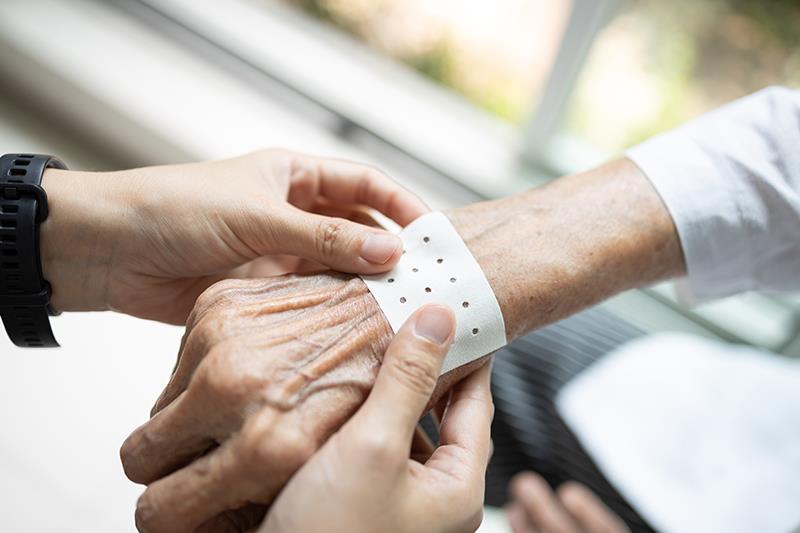Electrospun fibre patch to simplify psoriasis treatment





A new patch that adheres to the skin and delivers two active ingredients holds promise in the treatment of psoriasis, eliminating the need to apply topical medications frequently throughout the day and potentially improving treatment adherence among patients.
Developed by researchers from the University of Copenhagen in Copenhagen, Denmark, the fibre patch was designed to be dry and nongreasy, contain both salicylic acid and hydrocortisone, and be changed only once daily with the purpose of enhancing treatment comfort for the patients.
“We used the hydrophobic polymer polycaprolactone (PCL) as the fibre basis, as it displays biocompatibility, slow degradation, and compatibility with multiple active ingredients… [PCL] allows for sustained drug release over time and, unlike many hydrophilic polymers, does not dissolve completely within a few hours,” the researchers noted. [J Drug Deliv Sci Technol 2021;61:102138; Eur J Pharm Biopharm 2023;190:81-93]
“For salicylic acid, serving as a keratolytic to enhance the penetration of hydrocortisone, we aimed to achieve a rapid release, while hydrocortisone was to be released over 24 hours in a delayed fashion,” they added.
In two separate studies, the researchers demonstrated that by using layer-by-layer electrospinning, the patches were able to achieve the desired slow-release of hydrocortisone. Within the first hour, only 40 percent of the total amount of drug was delivered, followed by a delayed release, with almost 70 percent of the drug released over 24 hours. The remaining amount of drug was delivered in the following days. [Biomater Adv 2025;166:214068; RSC Pharm 2024;1:570-580]
Meanwhile, permeation and retention experiments showed superior skin penetration of drug from the patches than from either the salicylic acid ointment or the hydrocortisone cream. The researchers pointed out that the high surface-to-volume ratio of the electrospun fibres can improve dissolution rate and drug release. “For example, a study with buccal mucosa showed that the permeation rate of the model drug albendazole was three times higher than that of the pure, solid substance on the skin, as the latter tended to form agglomerates.” [BioNanoScience 2019;9:625-636; J Adv Res 2016;7:483-489]
Other benefits of the electrospun fibre patches included good flexibility and stretchability, cytocompatibility, and an anti-inflammatory effect when loaded with hydrocortisone.
Commenting on the merits of the patches, lead researcher Dr Anna-Lena Gürtler said, “It is really clever, because treatment of psoriasis often requires more than one product. The two ingredients are released in a controlled manner and at different rates, as they serve different functions: Salicylic acid is released immediately to remove the dead cells that have accumulated on the skin, while hydrocortisone decreases inflammation of the skin—a process that takes more time.
“We have tested the prototype on pig skin and human skin cells and compared the results to the creams and ointments available at pharmacies, and our studies show that the patch is just as effective as standard treatments.”
Gürtler and colleagues believed that the electrospun fibre patches pose as an attractive alternative to the standard semi-solid formulations that need to be applied several times a day.
“Patient surveys indicate that an ideal formulation should avoid leaving the skin greasy or sticky, should not have an unpleasant odour, require an application only once a day, provide a comfortable moisturization, and should generally be easy to apply,” the researchers said. “Electrospun skin dressings fulfil all these requirements and are, therefore, an ideal potential drug delivery system to treat inflammatory skin diseases [including psoriasis].” [J Dermatol Treat 2019;30:659-663; Cutis 2002;70:327-332; J Controlled Release 2023;363:621-640; Wiley Interdiscip Rev Nanomed Nanobiotechnol 2023;15:e1829]